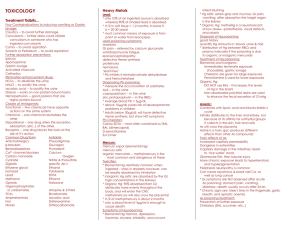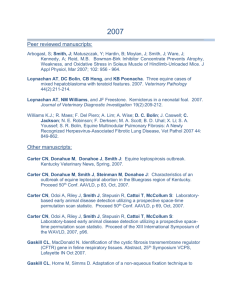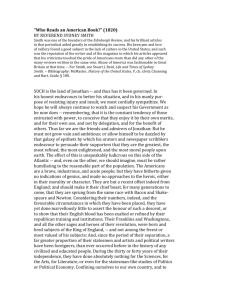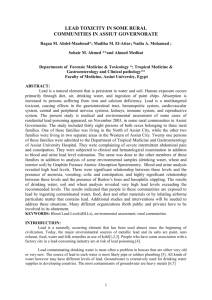Quantification of Ethylene Glycol in Biological Samples Using Direct
advertisement
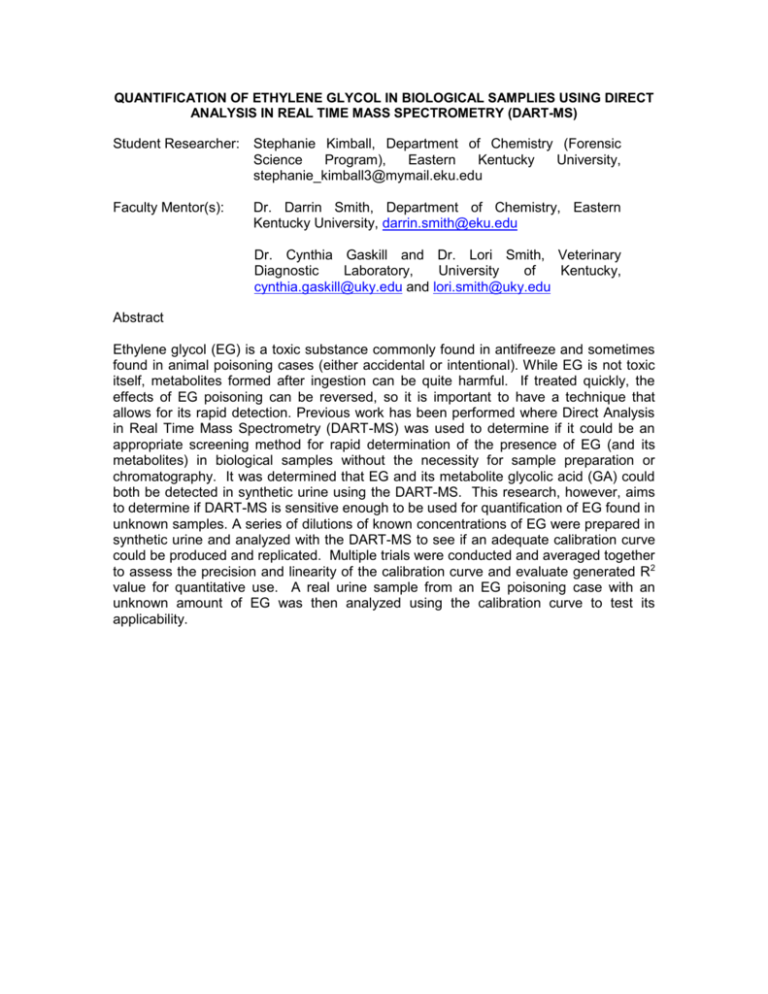
QUANTIFICATION OF ETHYLENE GLYCOL IN BIOLOGICAL SAMPLIES USING DIRECT ANALYSIS IN REAL TIME MASS SPECTROMETRY (DART-MS) Student Researcher: Stephanie Kimball, Department of Chemistry (Forensic Science Program), Eastern Kentucky University, stephanie_kimball3@mymail.eku.edu Faculty Mentor(s): Dr. Darrin Smith, Department of Chemistry, Eastern Kentucky University, darrin.smith@eku.edu Dr. Cynthia Gaskill and Dr. Lori Smith, Veterinary Diagnostic Laboratory, University of Kentucky, cynthia.gaskill@uky.edu and lori.smith@uky.edu Abstract Ethylene glycol (EG) is a toxic substance commonly found in antifreeze and sometimes found in animal poisoning cases (either accidental or intentional). While EG is not toxic itself, metabolites formed after ingestion can be quite harmful. If treated quickly, the effects of EG poisoning can be reversed, so it is important to have a technique that allows for its rapid detection. Previous work has been performed where Direct Analysis in Real Time Mass Spectrometry (DART-MS) was used to determine if it could be an appropriate screening method for rapid determination of the presence of EG (and its metabolites) in biological samples without the necessity for sample preparation or chromatography. It was determined that EG and its metabolite glycolic acid (GA) could both be detected in synthetic urine using the DART-MS. This research, however, aims to determine if DART-MS is sensitive enough to be used for quantification of EG found in unknown samples. A series of dilutions of known concentrations of EG were prepared in synthetic urine and analyzed with the DART-MS to see if an adequate calibration curve could be produced and replicated. Multiple trials were conducted and averaged together to assess the precision and linearity of the calibration curve and evaluate generated R2 value for quantitative use. A real urine sample from an EG poisoning case with an unknown amount of EG was then analyzed using the calibration curve to test its applicability.



